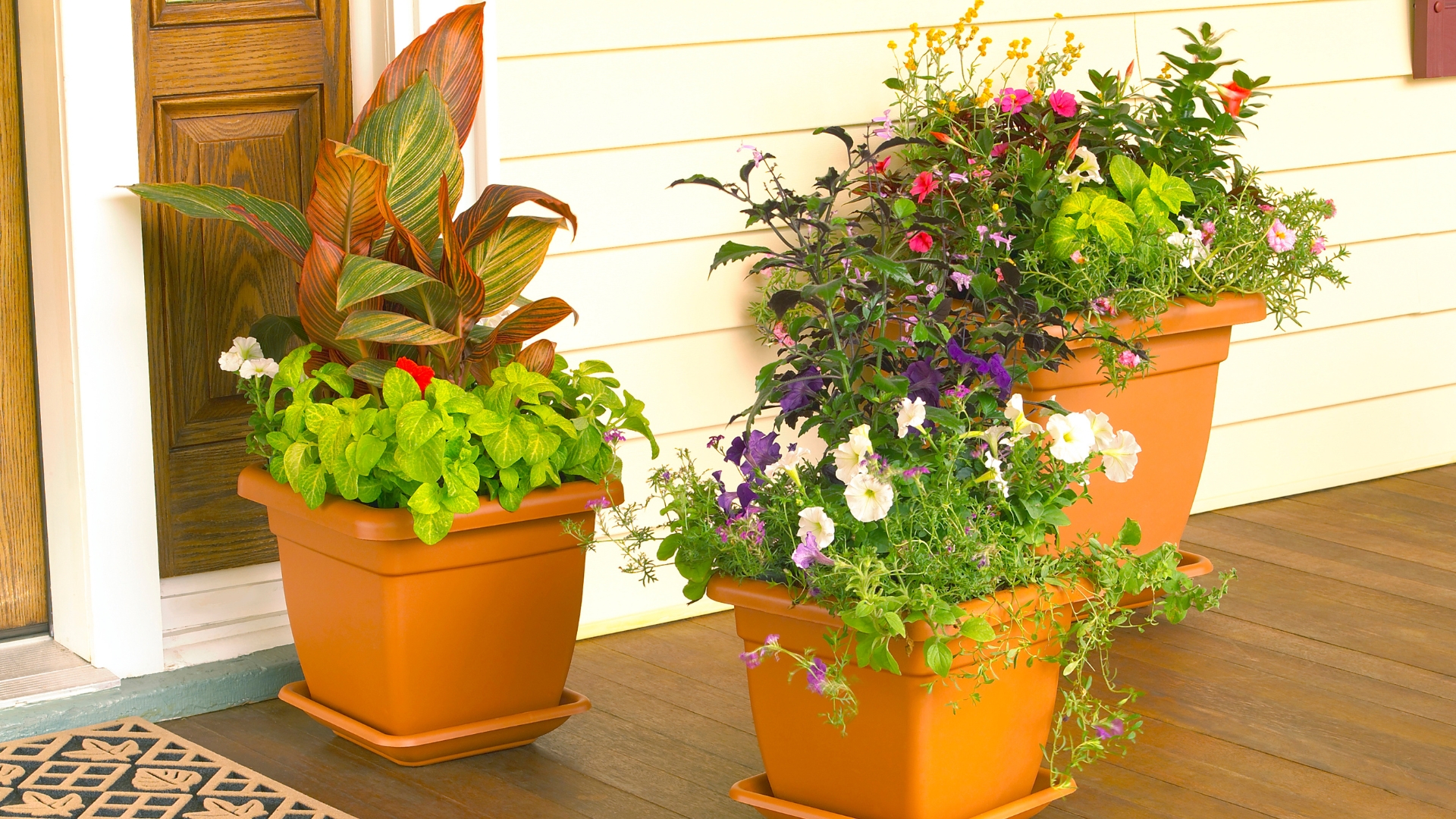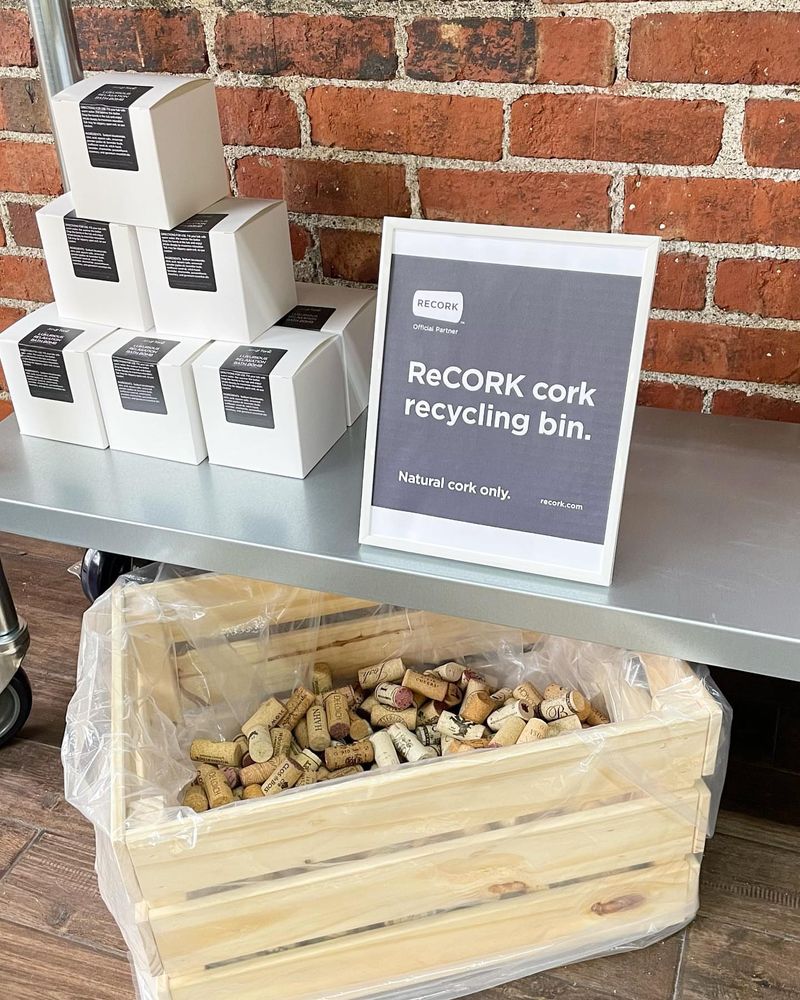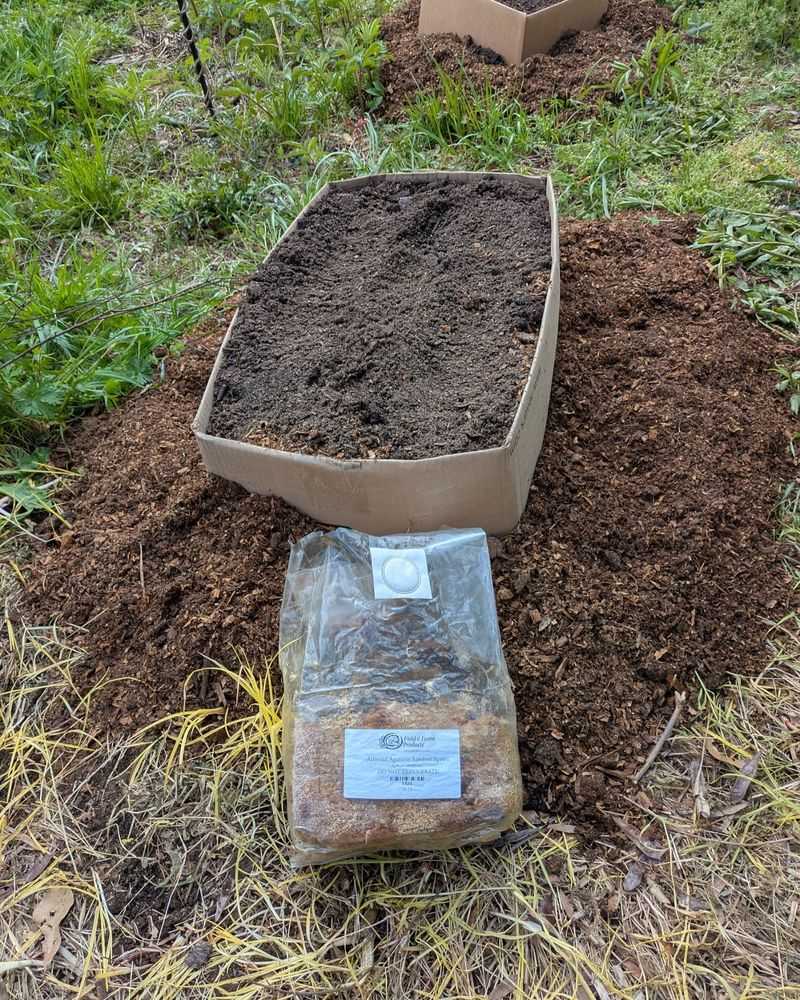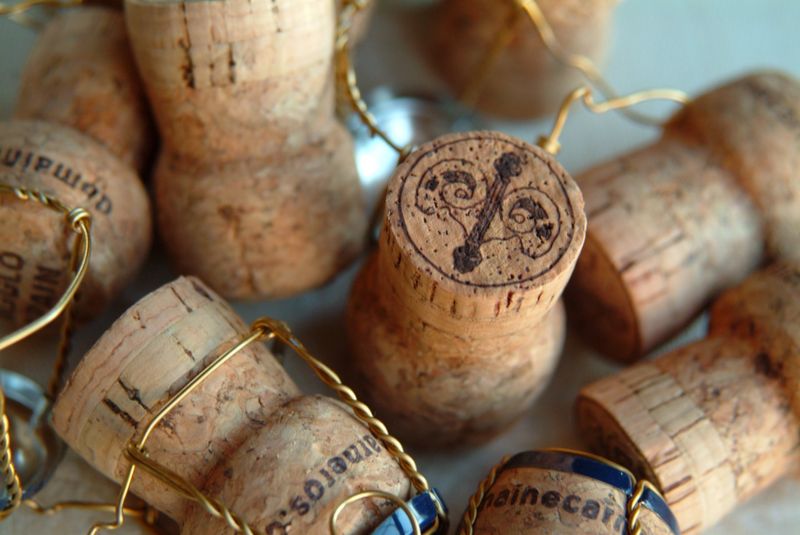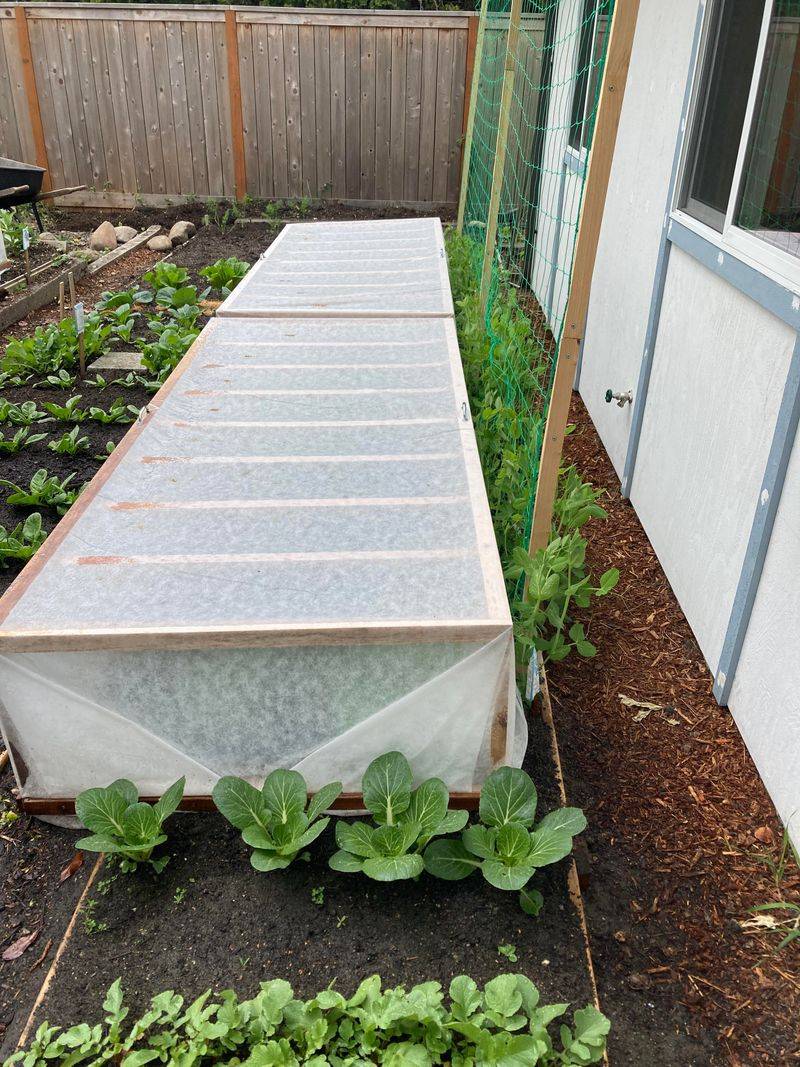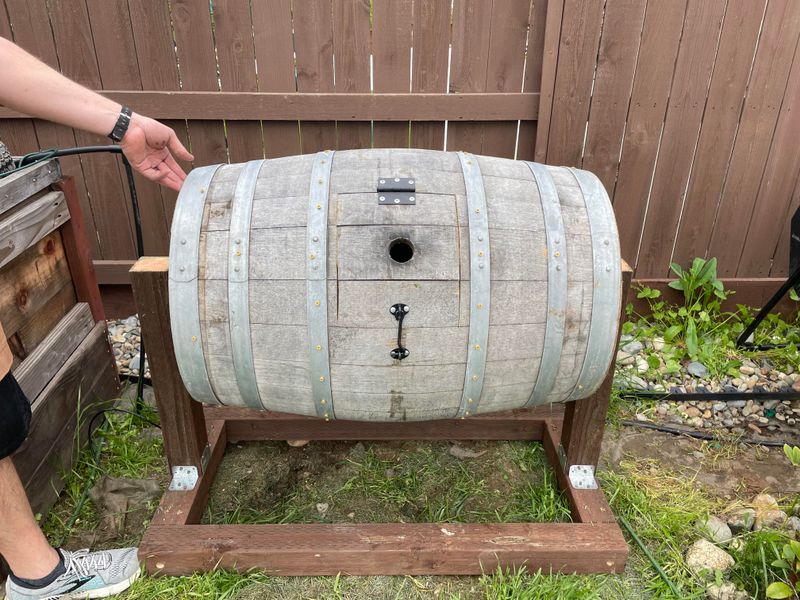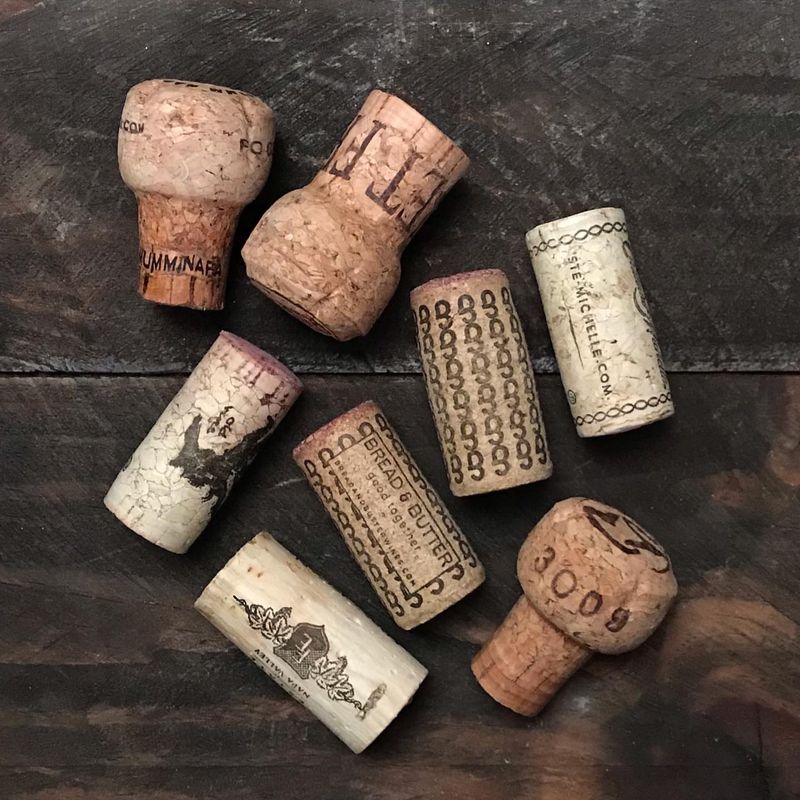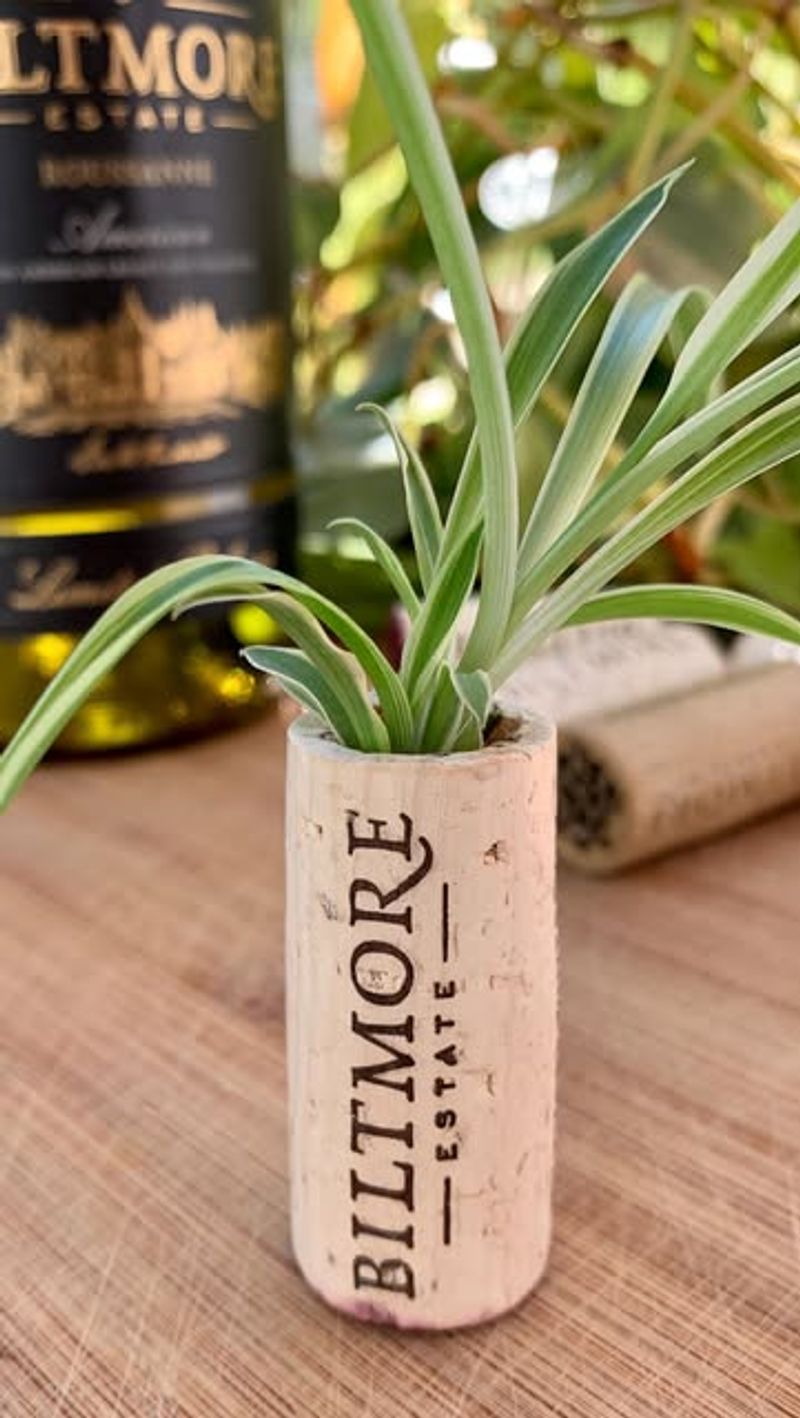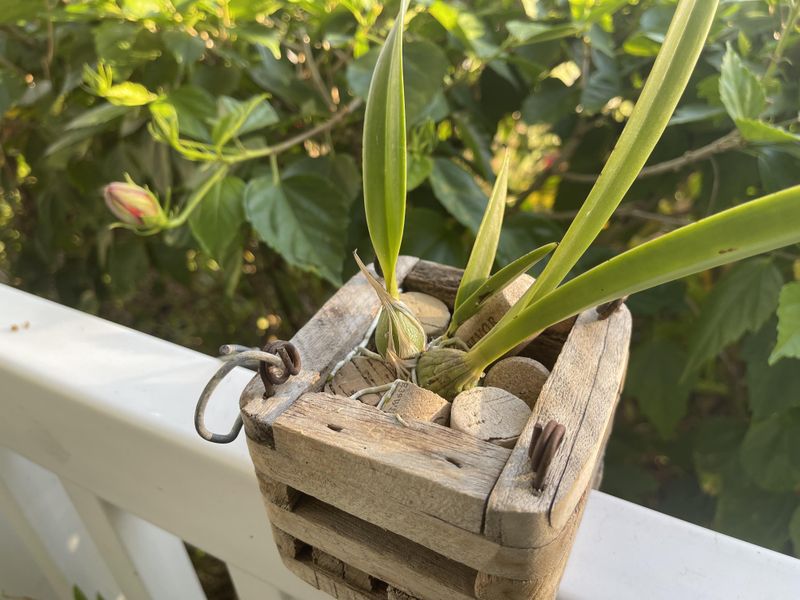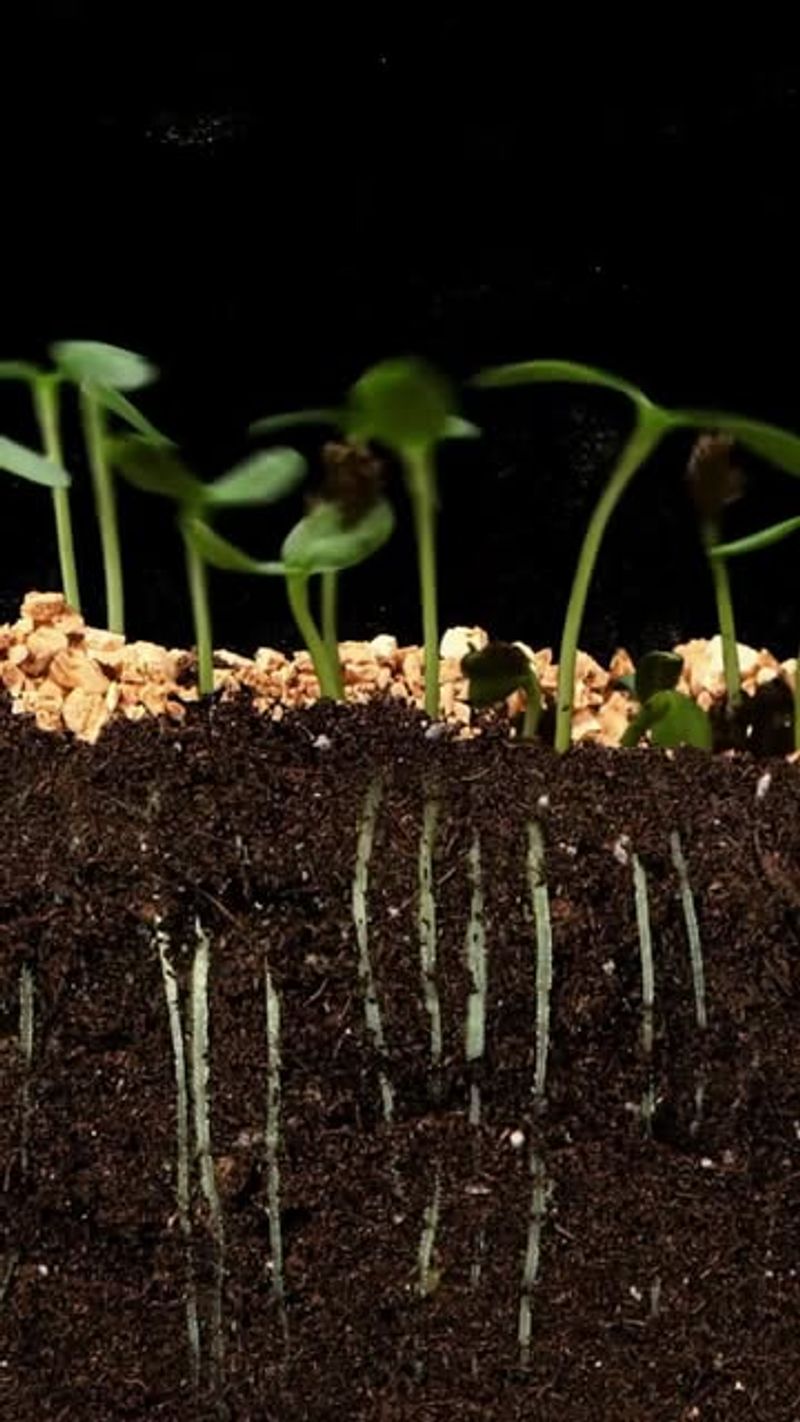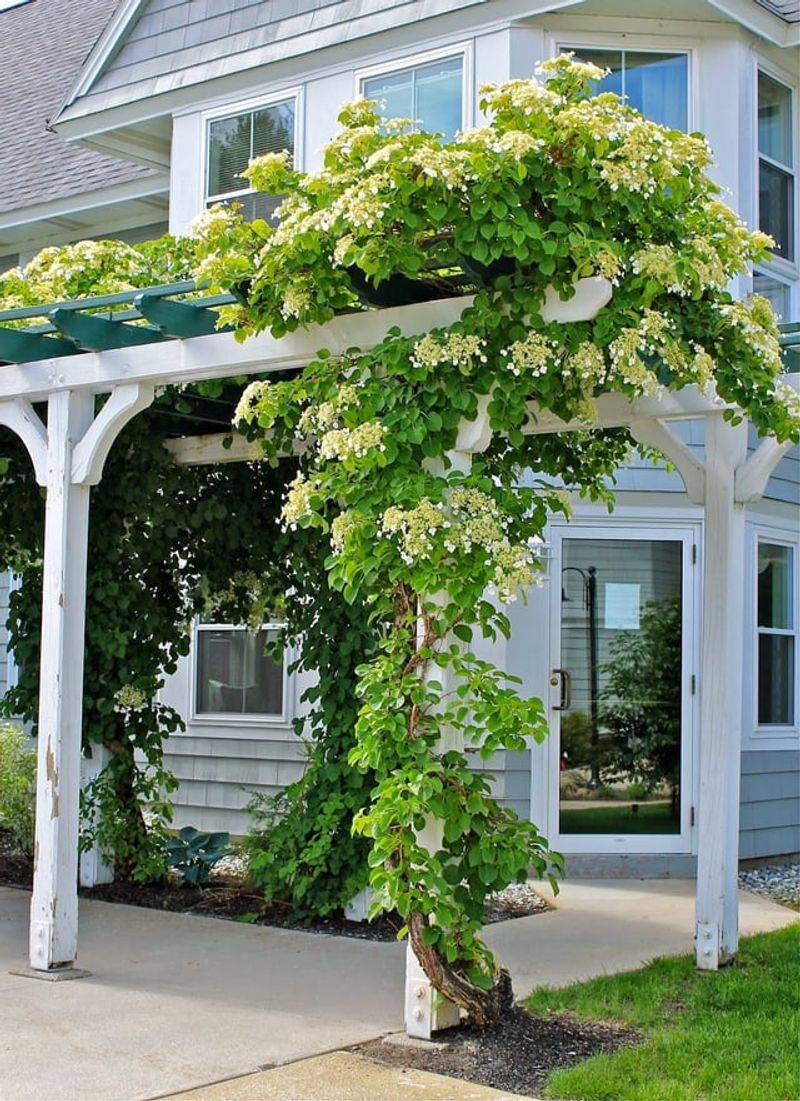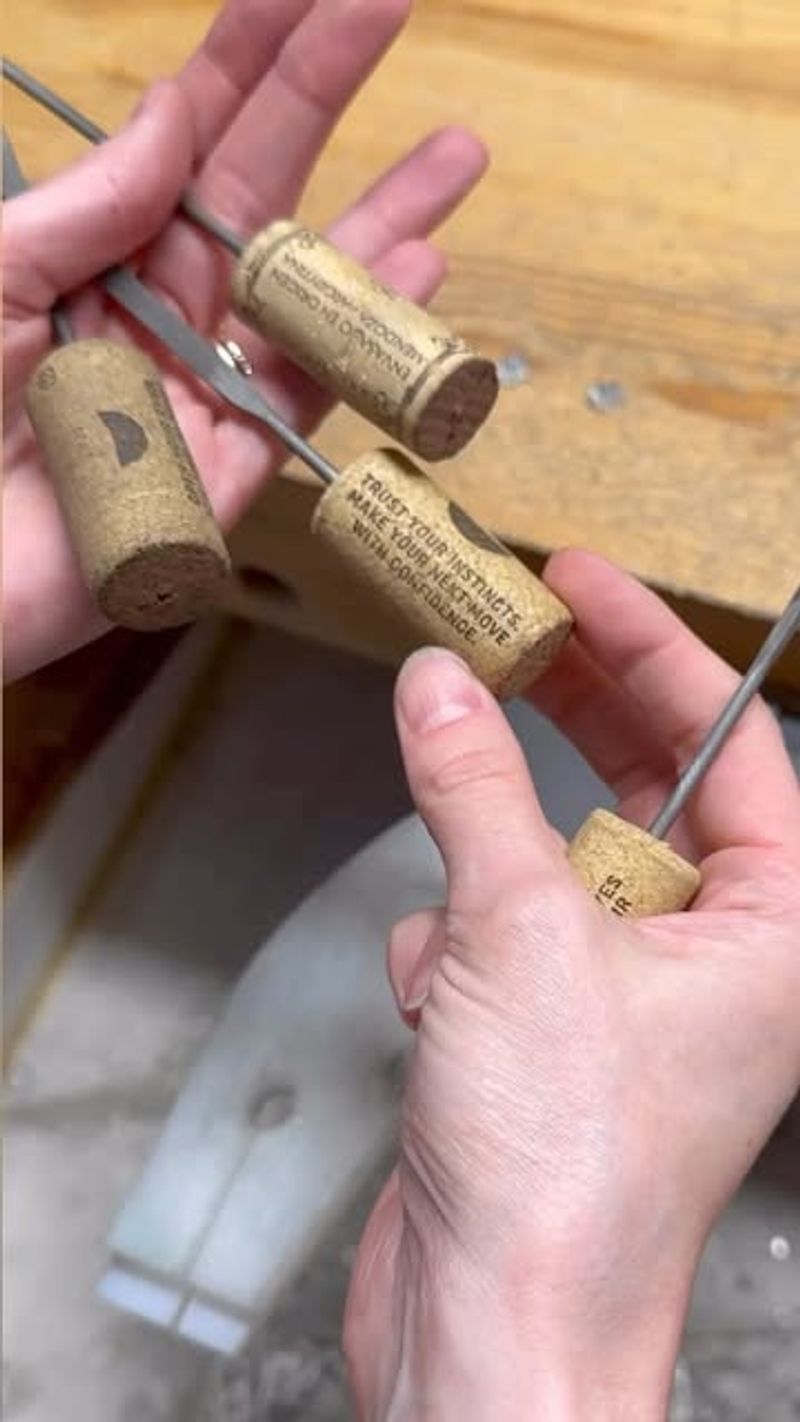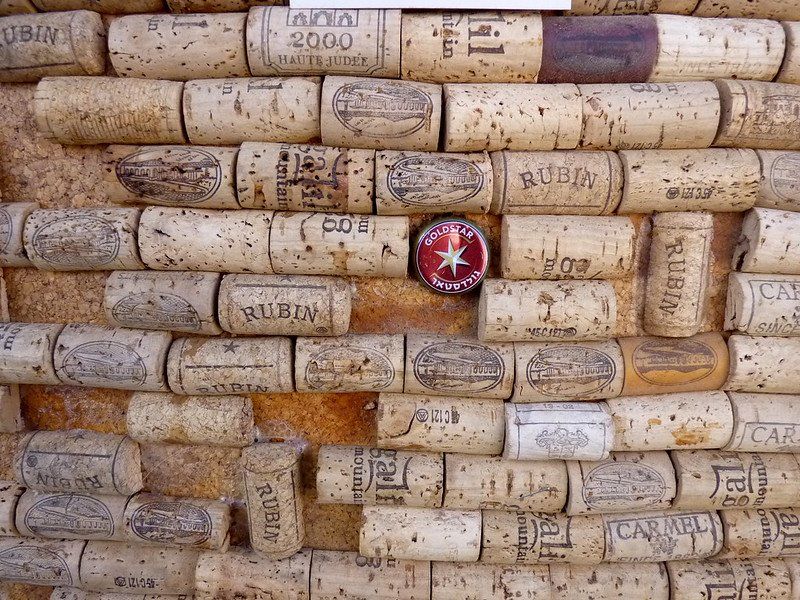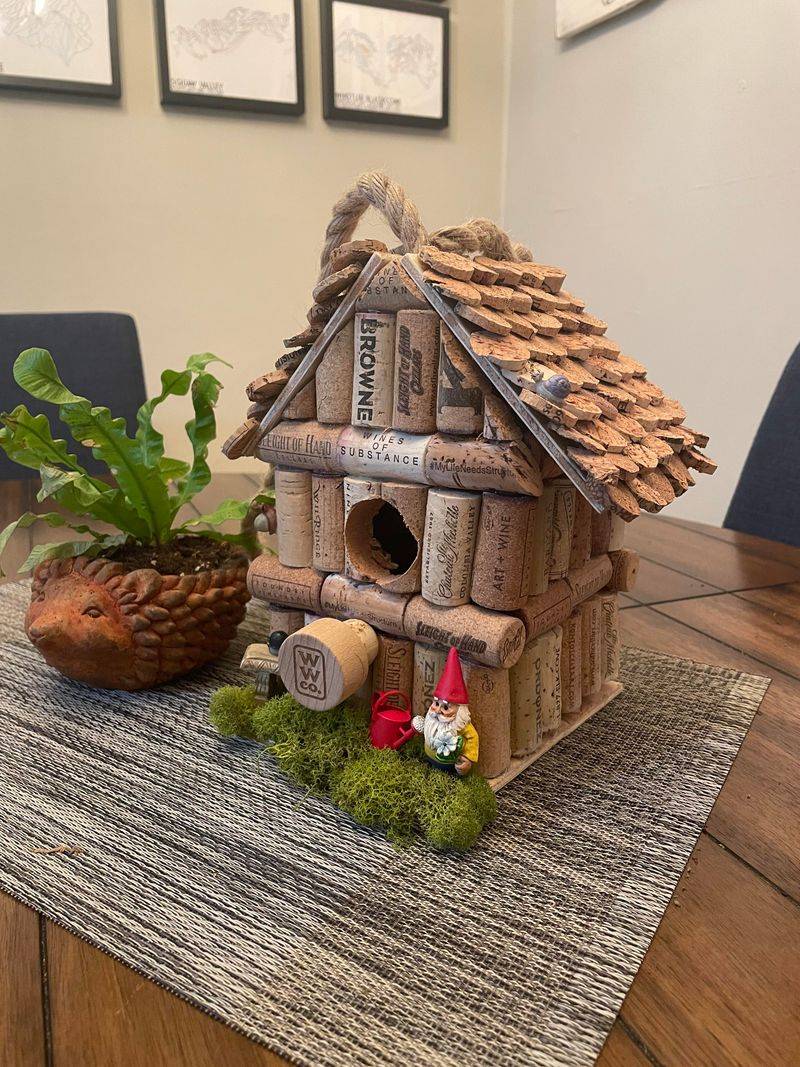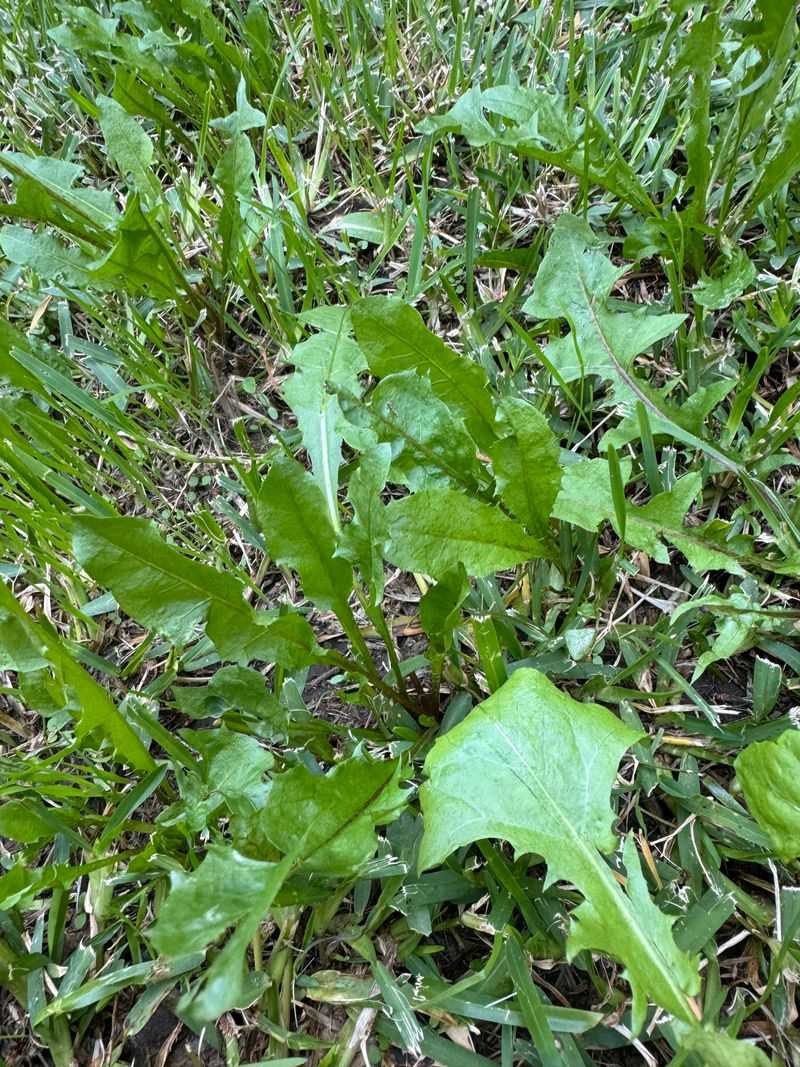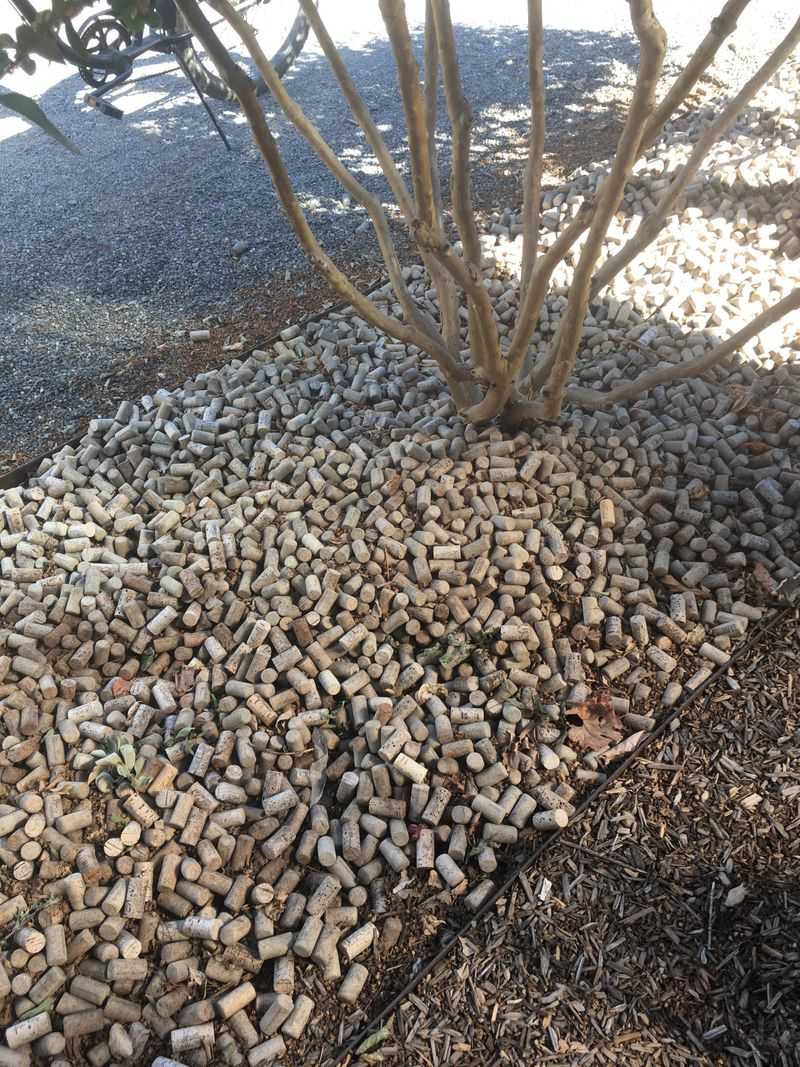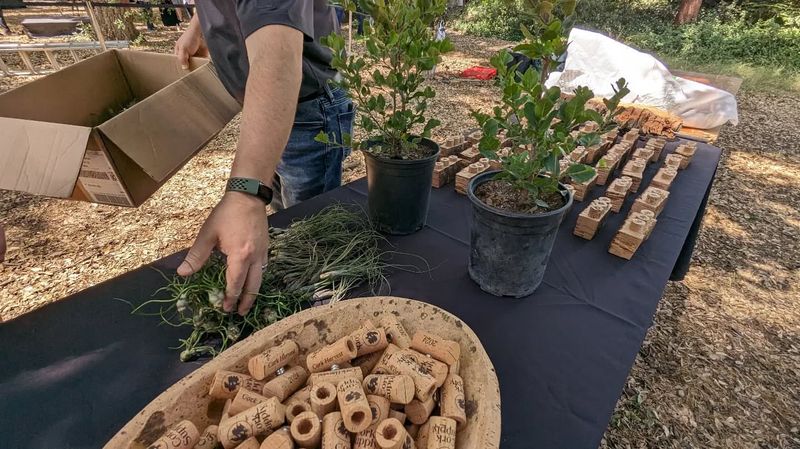Who knew a humble wine cork could be a secret weapon in the garden? From boosting drainage to deterring pests, this simple, sustainable trick has gardeners buzzing—and for good reason. These 16 genius uses are turning everyday corks into plant-saving, soil-loving heroes.
No special tools, no fancy gear—just smart, down-to-earth gardening that’s taking the internet by storm.
1. Natural Drainage Boosters
Old wine corks create perfect drainage in potted plants when broken into pieces and added to the bottom of containers. The natural cork material allows excess water to flow through while preventing soil from washing out.
Unlike rocks or gravel that add unwanted weight, these lightweight cork bits make pots easier to move around. Many gardeners report healthier plants with fewer root rot issues after making this simple switch.
2. Moisture-Retaining Mulch
Ground-up wine corks form an excellent moisture-retaining mulch that slowly breaks down over time. When processed in a food processor or blender, these cork bits create a protective layer that keeps soil damp during hot weather.
Garden beds topped with cork mulch need watering less frequently, saving both time and water. The natural color blends beautifully with garden aesthetics while serving a practical purpose that commercial mulches can’t match.
3. Plant Markers That Last
Whole wine corks transform into charming, weatherproof plant markers with just a wooden skewer and permanent marker. Simply write the plant name on the cork, attach it to a skewer, and stick it in the soil next to your plants.
Unlike paper or plastic markers that fade or break, cork markers withstand rain and sun for multiple seasons. The natural resistance to moisture makes them perfect for herb gardens, vegetable patches, or anywhere you need to identify plants.
4. Floating Row Cover Weights
Gardeners struggle keeping row covers in place during windy days, but wine corks threaded onto garden twine solve this problem brilliantly. The string of corks creates enough weight to hold covers down without damaging delicate plants underneath.
During sudden temperature drops, these cork weights allow quick deployment of frost protection. Several gardeners report saving entire crops of seedlings using this method during unexpected spring cold snaps.
5. Compost Aerators
Tossing a handful of whole corks into your compost bin creates natural air pockets that speed decomposition. The small spaces between corks allow oxygen to reach deeper layers of organic material where beneficial microbes thrive.
Faster composting means quicker access to rich garden soil. Experienced composters note that bins with cork aerators produce finished compost up to 30% faster than those without, transforming kitchen scraps into garden gold in record time.
6. Natural Pest Deterrents
Soaking wine corks in essential oils creates powerful, natural pest deterrents that keep garden pests at bay. Peppermint, lavender, or citrus-infused corks placed strategically around garden beds repel common pests without harmful chemicals.
Garden visitors often comment on the pleasant scent these corks release. The porous nature of cork material holds oils for weeks, making this an effective long-term solution for organic gardeners fighting persistent pest problems.
7. Mini Succulent Planters
Hollowed-out wine corks make adorable miniature planters perfect for tiny succulent cuttings. A small depression carved into the cork creates just enough space for a pinch of soil and a baby succulent to take root.
These mini planters double as unique refrigerator magnets when small magnets are attached to the back. Many gardeners report these tiny living decorations as conversation starters during gatherings, often inspiring friends to start their own cork gardening projects.
8. Water-Saving Pot Fillers
Large planters become more efficient when filled partially with wine corks before adding soil. This trick reduces the amount of soil needed while creating air pockets that promote healthy root growth.
Plants in cork-filled containers require less frequent watering because excess moisture drains away from roots. Many container gardeners report using this method to grow thriving plants in locations where they can’t water daily, saving both time and resources.
9. Seed Starting Helpers
Wine corks sliced in half lengthwise create perfect cradles for starting seeds. The natural groove holds seeds at the ideal depth while providing the moisture they need to germinate.
Once seedlings develop their first true leaves, the entire cork can be planted directly in the garden. Gardeners love this method because it eliminates transplant shock and reduces plastic waste from traditional seed starting trays.
10. Vertical Garden Anchors
Vertical gardeners use wine corks as natural anchors for hanging plants on walls. Drilling small holes through corks creates perfect attachment points for garden twine or wire that support climbing plants.
The corks’ water-resistant properties prevent rot where they contact the wall. Creative gardeners have designed entire living walls using this method, transforming blank spaces into lush green displays that thrive for years.
11. Garden Tool Protectors
Sharp garden tools become safer when wine corks are pushed onto exposed points and blades. This simple hack prevents accidental cuts while protecting tools from damage when stored together.
Beyond safety, these cork covers help tools last longer by reducing moisture contact that leads to rust. Gardeners with children particularly appreciate this method for creating a safer tool shed environment while teaching responsible gardening habits.
12. Erosion Control Mats
Sliced wine corks arranged in a grid pattern and connected with garden twine create effective erosion control mats for sloped garden areas. These handmade mats slow water runoff while allowing plants to grow through the openings.
Unlike commercial erosion mats, these cork versions gradually decompose over several years. Gardeners with hillside properties report significant reduction in soil loss during heavy rains after installing these simple yet effective barriers.
13. Pollinator Habitat Builders
Bundles of wine corks tied together create perfect nesting sites for native solitary bees. The small spaces between corks provide ideal homes for these important garden pollinators.
Hanging these cork bundles near flowering plants dramatically increases pollination rates. Gardeners report higher vegetable yields and more abundant flowers after installing these simple pollinator homes, with some seeing bee activity within days of placement.
14. Weed Barrier Anchors
Landscape fabric stays firmly in place when secured with wine corks pushed through the material into the soil below. These natural anchors hold better than commercial plastic stakes while being completely biodegradable.
The cork’s rough texture grips fabric securely even during strong winds. Many gardeners have switched to this method after discovering how effectively it holds weed barriers in place while eliminating the frustration of lost plastic stakes.
15. Natural Soil Amendments
Finely ground wine corks make excellent soil amendments for clay-heavy gardens. The cork particles create permanent air pockets that improve drainage while slowly decomposing to add organic matter.
Gardens amended with cork show improved root development in previously compacted areas. Unlike peat moss that must be replenished yearly, cork amendments continue working for several seasons, making them a sustainable choice for improving problematic soils.
16. DIY Irrigation System Components
Drilled wine corks become perfect connectors for DIY drip irrigation systems when fitted with small plastic tubing. These natural fittings don’t crack in the sun like plastic connectors and create better water-tight seals.
Gardeners building custom irrigation appreciate how easily corks can be shaped to specific needs. The ability to create custom water delivery systems has helped many gardeners reduce water usage while maintaining healthier plants during hot summer months.

